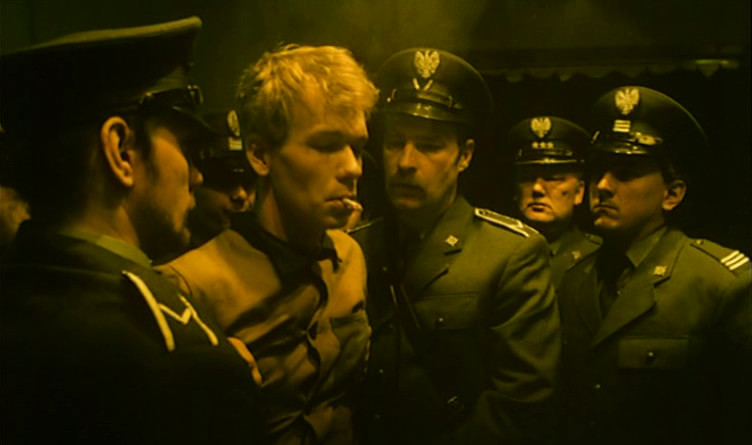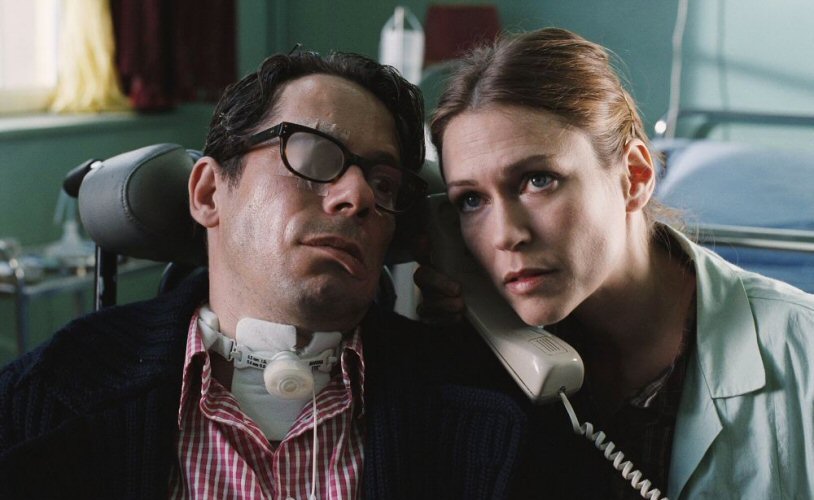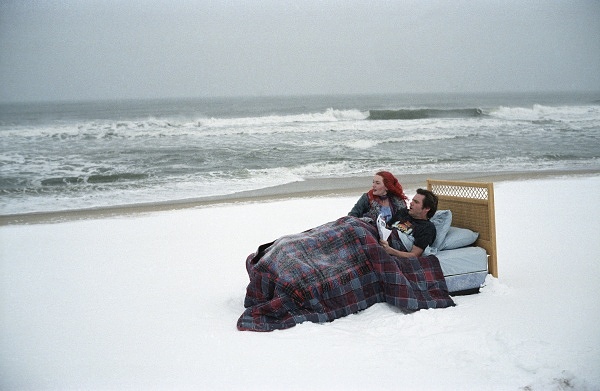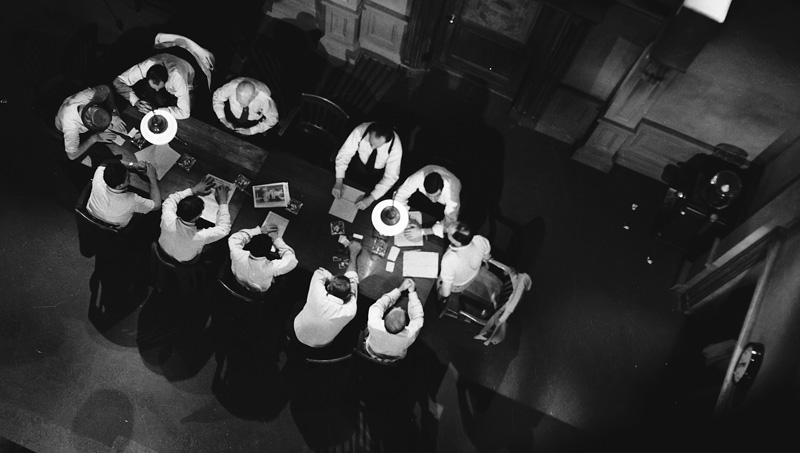
Less as it may be, still there are a few auteur of cinema who are more concerned with filmmaking as an art and less as a medium to mint money. Every artist strives to create a body of work that connects with an audience, but there are few who come to fulfil a personal vision instead of catering to what the masses desire.
It is this personal vision and creative freedom that drives an auteur to discover and create cinematic languages that tell a story by building both explicit and implicit layers of meaning for the audiences to comprehend.
For instance, a filmmaker like Andrei Tarkovsky broke all the rules of cinema with his autobiographical film Mirror, developing a language that discouraged passive viewing and instead asked a lot more from the viewer as well.
There are many filmmakers like Bergman, Fellini, Bresson, Bunuel, Scorsese to name a few who definitely deserve mention as their films are by no means inferior to the films that have been discussed here.
10. Manhattan

Adultery and weaknesses has rarely been shown as so natural and human. No wonder Manhattan is Woody Allen’s finest screenplay, filled with expostulating characters with relationship difficulties and hilarious interludes about the human condition.
The film revolves around a couple of intellectual, semi-bohemian friends living in Manhattan. Allen enacts the role of Issac Davis, the typical artist of the times with big dreams and equally big insecurities. He is a neurotic writer in his forties, whose ex-wife Jill has left him when she realized that she in fact a lesbian. He is now romantically involved with Tracy, a 17-year-old high school student.
Apart from the main protagonist Isaac and his girlfriend Tracy (played by Mariel Hemingway), there is in the ambit, Isaac’s ex-wife Jill (Meryl Streep), his friend Yale (played by Michael Murphy), Yale’s wife Emily (Anne Byrne) and the extroverted and erudite journalist Mary (played by Diane Keaton).
Filmed in Panavision on Technicolor stock, then printed in black and white, this film is Allen’s most complex reflection on the artist as a die-hard romantic. As with other Allen films, this one too dwells on the impossibility of lasting relationships. One important subject explored here is maturity and its relation to the conflict between emotions and reason.
However, being a Woody Allen movie, it is a dialogue-oriented witty take on love, human imperfection and the complications and contradictions that arise from them. There are almost a hundred living postcard shots over Gershwin’s Rhapsody in Blue. The masterful cinematography of Gordon Willis is sometimes reused as pillow sequences – short interludes which tie the narrative together to form a beautiful, cohesive whole.
9. A Short Film about Killing

The fifth in the Decalogue series, A Short Film about Killing is the filmmaker’s statement about the State’s take on Capital Punishment – an outright rejection of the moral code: Thou shalt not kill, though nothing is said overtly. What one sees on the screen is so magnetic that the deliberate slow pacing of the film goes completely unnoticed.
A Short Film about Killing (1988) has one-twentieth the number of deaths compared to, say Quentin Tarantino’s Kill Bill Volume 1. There are 3 deaths (including the death of a cat) in Killing versus 62 in Kill Bill Volume 1. It’s evident that Kieslowski’s approach to the subject is overtly political and highly moving – less killing, more about killing, and that is what makes it not just a film but a landmark of Polish cinema.
The story begins with three parallel narrations in Warsaw – a young man named Jacek, who seems to be strolling around town, then a middle-aged taxi driver getting his car ready for the day, and third, a man graduating to become a public defender. Fate brings them together at different points of time as their paths converge. The young man Jacek brutally murders the taxi driver, as a result of which the public defender fights his first case defending Jacek against the State.
Of course, he loses and Jacek is sentenced to death. We then observe the final moments of Jacek leading to his execution. Kieslowski gives an intimate account of the cold and mechanical execution, focusing on the small things thereby showing that whoever commits the act of killing, it is always cold and brutal.
8. The Diving Bell and the Butterfly

The film is a poignant reaffirmation of endurance of the human spirit – an unbelievable face-off with the darkest forces of fate. This is the story of how Jean-Do, the editor of Elle France, suffers a massive stroke that paralyzes him totally, everything except his mind.
This is the story of how he creates something of inestimable value from the depths of his suffering. This French film was shot on location at the Berck Maritime Hospital where Jean-Do was admitted and where he had spent the rest of his days. All through the movie, he utilizes the only thing he could summon – his imagination, a point of view he calls the butterfly.
Director Schnabel’s painter-like treatment creates the picture of a hospital room with plenty of pastel shades and greens. Cinematographer Harwood brilliantly realizes that at first the camera should be Jean-Do’s (and our) eye. This condition is known as “locked-in syndrome” in which he could communicate only through blinks of his sole functioning eye.
Despite turning into a vegetable, Jean-Do with the help of his devoted speech therapist Henriette (Marie-Josée Croze) an endlessly patient writing partner Claude (Anne Consigny) – managed to dictate, one letter at a time, an entire collection of his experiences and reflections. Published in the year 1997, The Diving Bell and the Butterfly has become a classic piece of writing when it comes to illness.
It stands testimony to the incredible willpower and imagination that made it possible for Jean-Do to do the unthinkable. The movie did full justice to the original memoir and wrote history by becoming the most remarkable film of 2007.
7. Eternal Sunshine of the Spotless Mind

Once in a while a movie comes along which, after it ends, is all you can think of for days. Directed by Michel Gondry and written by Charlie Kaufman, Eternal Sunshine of the Spotless Mind reaches out for something personal like troubling memories buried deep in our psyche. It is the rarest of all films, a genuine therapeutically liberating work of art.
Jim Carrey plays the leading role as Joel, a mild-mannered and shy man who is enduring a messy breakup with his ex, Clementine (Kate Winslet). To his utter dismay, Joel discovers that in order to get a handle on the breakup, Clementine had Joel erased from her memory. Shocked, Joel opts for the same procedure. Bulk of what happens on the screen actually goes on in Joel’s mind as he undergoes the process of erasing.
We see him regret everything that led to this obnoxious moment. Needless to say, going back in time by witnessing both Joel and Clementine is the only way we can really get to know the reasons for their fallout. This is one of the most beautiful aspects of the film, and the most revealing about how to save and rebuild a relationship.
Eternal Sunshine is one of the greatest love stories as it urges us to face our faults and accept that they’re inevitable. For once we accept the darkest memories, acknowledge inevitable future mistakes, and ignore the ugly parts to let the beautiful ones shine through, that’s when love is transcended and compatibility is no longer an issue.
6. 12 Angry Men

This is a gripping story of how a 12-men jury fights to save the life of a 16 year old teenager accused of murdering his father. The movie which plays out in real time, goes inside the deliberation room alongside a jury tasked with determining the guilt or innocence of an unnamed suspect accused of first-degree murder. Eleven of the 12 men initially vote “guilty.”
The one single holdout is Juror #8 (Henry Fonda) who harbours a reasonable doubt about the defendant’s culpability and, as he lays out his case point by point, the others listen. One by one the men are convinced to change their stand on the issue.
12 Angry Men by Sidney Lumet is an example of how a director can maximize a single location setting to the fullest. Prior to filming, Lumet went to the extent of locking up all the 12 men in a single room for a straight two weeks to enable them to get their equations of movement in a claustrophobic environment just right. And they did get it right as we see how natural they appear in their confined surroundings on screen.
Another reason why the movie is considered to be a landmark is due to its excellent use of the camera. As tempers flare and the drama in the room heats up, and as the audience feel the tension, the walls of the room actually feel as if they’re closing in gradually, thanks to some subtle and ingenious camera work.
12 Angry Men isn’t a perfect movie, it has its share of flaws but the issues that were addressed are as relevant today as they were in 1957. From the possibility of a wrong verdict due to a defence lawyer’s prejudice to racial leanings of a juror, how does a jury overcome its shortcomings so that the verdict is right on target? Are the people in the room more concerned about getting back to their own lives than arriving at the best decision? Thanks to the superb direction, these and many other questions keep the pace taut and the tension palpable right till the very end.